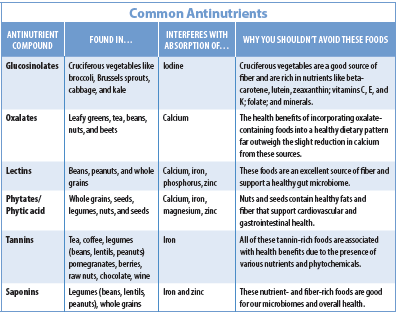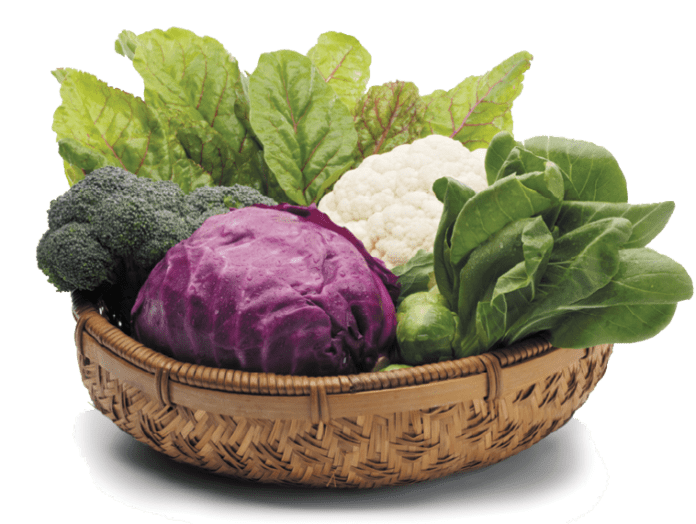Healthy foods like beans, whole grains, nuts, and leafy greens contain a wide range of nutrients necessary for the growth and health of our bodies and our gut microbiomes. You may have also heard they conatin “antinutrients”—substances that can partially block the absorption of certain nutrients, usually minerals like calcium or iron. Fortunately, the science shows that the presence of foods containing antinutrients in a healthy, varied dietary pattern is no cause for concern.

Impact on Health. Plants contain many compounds that help protect them from threats like bacterial infection and insects. These compounds may bind with certain minerals in the plants or in our digestive tract, making the minerals less available for absorption in our intestines. In the U.S., mineral deficiencies in healthy individuals are extremely rare. If we get plenty of minerals from a varied dietary pattern, the small percentage we cannot absorb because they are bound to antinutrients should not create a problem. “For most essential minerals, we consume more than our bodies need,” says Alice H. Lichtenstein, DSc, Gershoff professor at the Freidman School and executive editor of this newsletter.
What to Do. There is no evidence that the presence of antinutrients in commonly consumed foods leads to mineral deficiencies. Vegetarians, who generally consume diets high in antinutrient-containing plant foods, are not prone to nutrient deficiencies. Likewise, even though tannins somewhat reduce iron absorption, studies have found most individuals who consume diets high in tannins along with adequate dietary iron have normal iron status.
Do not limit your intake of healthy foods because you’ve heard they contain antinutrients. “Dietary patterns rich in legumes, whole grains, and leafy greens far outweigh the theoretical negative effect of the antinutrients,” says Lichtenstein. “For example, leafy greens are an excellent source of many vitamins and minerals and fiber—and even high-oxalate greens provide more nutrients than eating no greens at all.” The key is to eat a dietary pattern of whole and minimally processed foods, and to choose a variety within each food group. Eating a variety of foods from all food groups prepared different ways ensures you’ll get all the nutrients you need.
























